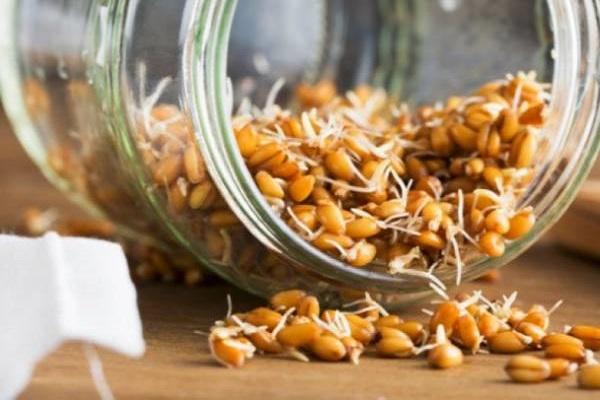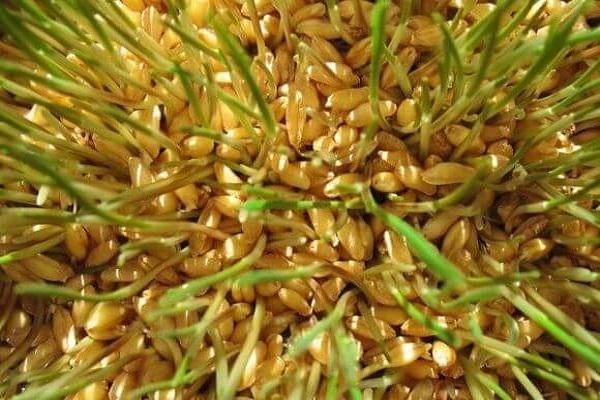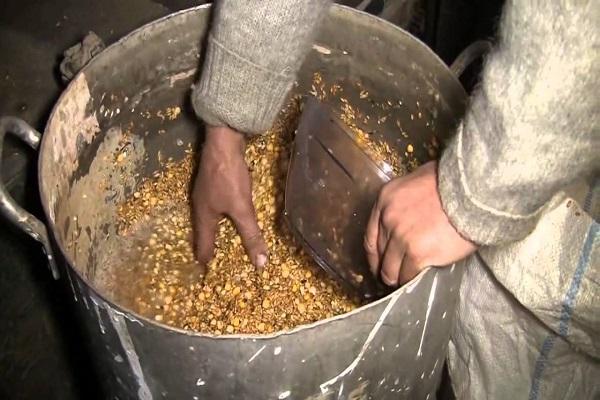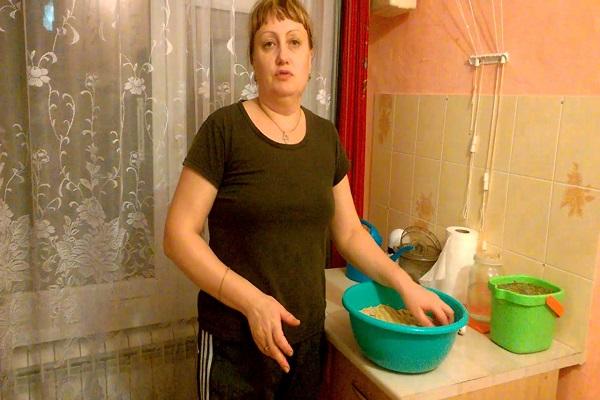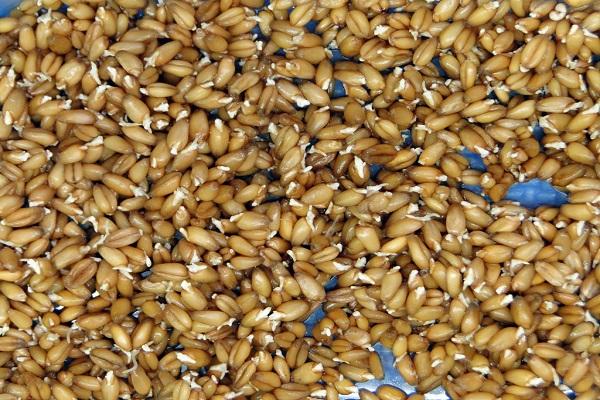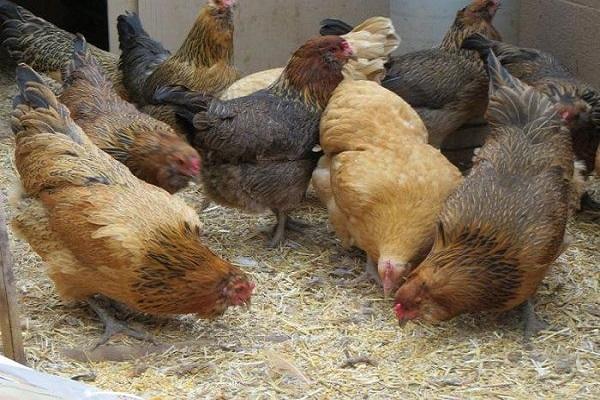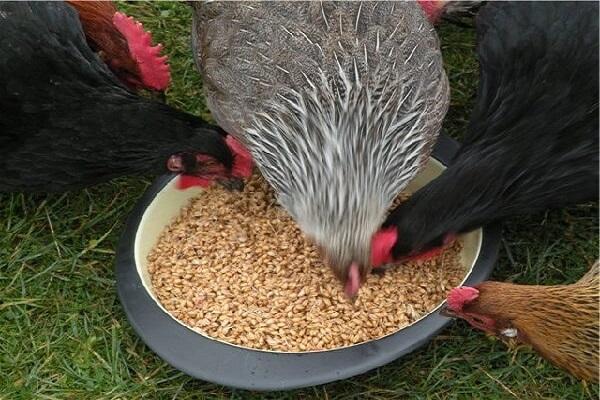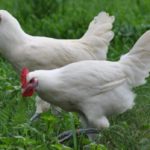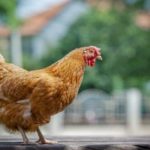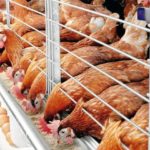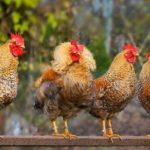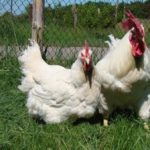In autumn and winter, chickens often experience a lack of microelements, vitamins, and minerals. Experienced poultry farmers replenish their birds' body supply with cereal crops. It is useful for beginning poultry farmers to know how to properly germinate wheat for chickens, when to feed them, and at what age. After all, incorrectly selected wheat or an overdose of the product will lead to negative consequences.
- What are the benefits of sprouted wheat?
- What are the dangers of this product?
- How to grow it correctly?
- Wheat selection
- Soaking planting material
- Aging the resulting mixture
- Laying out the grains
- Feeding wheat to chickens
- When to feed chickens with wheat germ
- At what age can chickens be given wheat?
- Feeding recommendations
What are the benefits of sprouted wheat?
Farmers call sprouted wheat a dessert for laying hens. Thanks to the new chemical composition, the usefulness of sprouted grain is obvious:
- Amino acids strengthen the immune system and increase the speed of metabolic processes in the body.
- Minerals affect egg size and support bone and muscle tissue.
- Vitamins prevent diseases and stabilize hormonal levels.
- The grains are quickly digested and nutrients are absorbed into the body in maximum quantities.
- Chickens spend a minimal amount of energy, therefore, retain reserves of minerals and vitamins.
- Easily digestible fiber cleanses the intestinal walls of toxins, improving its functioning.
Farmers sprout wheat to obtain a dietary product. They feed the product to fattened chickens. Solid fibers eliminate waste in the stomach, thereby making it work functionally. Sprouts reduce cholesterol levels and speed up metabolic processes.
What are the dangers of this product?
A supplement in the form of sprouted grains can bring not only benefits, but also harm the body. Problems will arise if the dosage is incorrect. Birds should correctly calculate the amount of supplements in relation to the daily requirement. Sprouted wheat should make up 30% of the total amount.
An overdose entails an oversaturation of useful substances:
- An excess of iron in the body of laying hens leads to disruption of the functioning of vital organs: there is a malfunction of the pancreas and liver. Zinc, calcium, vitamin E, and manganese cease to be absorbed.
- High levels of vitamin A in the liver cause toxic effects. As a result, the hatchability and fertilization of eggs decreases.An overdose of vitamin A results in a sharp decrease in vitamin E in the liver and blood.
- An excess of vitamin D in the blood leads to the consumption of vitamin E and causes toxicosis.
- Long-term use leads to diarrhea and bloating.
It is important that the additive contains other components in the mixture. In its pure form, it is quickly digested and does not saturate the body. The chicken will be weakened due to lack of carbohydrates.
How to grow it correctly?
When creating a valuable product at home, you should choose the right wheat, the material of the dishes, and soak the grain for germination for several days. Even a beginner can prepare sprouted wheat. The procedure does not require special equipment or skills.
The product is useful for poultry in autumn and winter, when the lack of microelements, vitamins, and minerals in the body is especially evident.
Wheat selection
They purchase raw material in different places: private farms, shops, markets. It is important to know the correct selection conditions:
- whole grain;
- absence of impurities;
- the cereal crop should be yellow or brown;
- dry grains;
- Rotten and moldy grains are excluded;
- cereal crops should not be subjected to heat treatment;
- grains with husks.
The main product is wheat, but other cereals, peas, and beans may also be present.
Soaking planting material
To soak the product you need a container. It is not recommended to use metal, as useful elements will combine with metal molecules. As a result, the amount of nutrients will decrease.
Plastic is used with a badge intended for food. Unlabeled plastic releases toxic substances.Glass containers, enamel dishes without chips, and ceramics are considered harmless materials. Some farmers soak their grain in bags.
Planting material is poured into a container and filled with water. If the products were kept in the cold, the grain is steamed with hot water (50-60 degrees); if it is warm, it is filled with liquid at room temperature. The temperature difference in the first case causes the grain to open. The water should be 2 centimeters above the grains.
Aging the resulting mixture
The pots with wheat are covered with a lid. Leave the grain to swell. Choose a place that is dry, warm, and dark. The culture is kept in this position for 6-15 hours.
Laying out the grains
Excess water from the container after aging is carefully drained. Prepare the drying area. It can be oilcloth, a dense fabric that does not allow moisture to pass through.
The grain is distributed in such a way that the layer is not too thick, otherwise the process of rotting will begin. The drying place is chosen without drafts, with an optimal humidity of 50-60%.
Too dry air prevents germination.
Prepare a damp cotton cloth and cover the wheat. It should be in this state throughout the entire time. When the bedspread dries, the fabric is moistened again or sprayed with a spray bottle.
When germinating grain in bags, farmers pour it into thirds. Place it on the surface and fill the empty spaces with grains to form a thin layer. Periodically spray the burlap when dry.
Feeding wheat to chickens
After 2 days, sprouts will appear - the product is ready for use. To obtain a larger supply of nutrients (especially vitamin A), the sprouts are grown to 5 mm in size.
It is not recommended to cook wheat for future use.The products are designed for 3 feedings. To do this, determine the daily norm for birds and take 30% of it. This is exactly how much supplementation birds need to avoid an overdose.
When to feed chickens with wheat germ
A supplement rich in vitamins and minerals is given to the bird throughout the year, 3 times a week. If this is not possible, farmers try to support birds in the fall and winter, when chickens are deficient in vitamins and other useful elements. During such periods, there are problems with laying eggs and low immunity.
Opinions among poultry keepers are divided regarding the timing of supplementation. Many poultry farmers provide food in the evening, 2 hours before bedtime. Wheat is scattered on the litter. Chickens look for food, thereby turning up the litter, increasing the body’s heat exchange, and preventing rotting of the litter. Having received additional nutrition, the bird rests well all night without experiencing hunger.
The second part of poultry farmers prefers to treat chickens with additives during the daytime. They pour it into feeders so that the chickens can eat everything.
Individuals suffering from obesity receive sprouted wheat in the morning. Chickens move throughout the day, the supplement enhances metabolism. Low-calorie foods speed up fat burning.
At what age can chickens be given wheat?
It is useful to give sprouted grain to chickens at the age of 14 days. As for adults, the supplement rate is 30-40% of the daily requirement.
Feeding recommendations
Experienced poultry farmers recommend:
- give sprouted wheat in autumn and winter. In the summer, chickens independently replenish their supply of vitamins while walking;
- Tear off sprouts 5 millimeters long and add them to the laying hens’ main feed. Sprout the wheat a second time.With this method, the concentration of useful substances increases several times;
- Valuable food is not stored for long, so calculate the dosage.
Simple recommendations can help birds be healthy, with high immunity, and good egg production.

